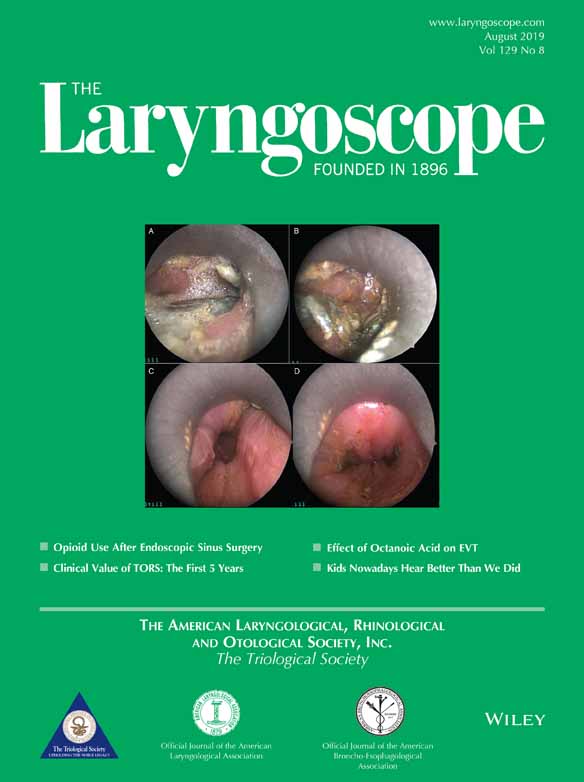Engineering of scaffold-free tri-layered auricular tissues for external ear reconstruction
Abstract
Objectives
Current strategies for external ear reconstruction can lead to donor site morbidity and/or surgical complications. Tissue-engineered auricular tissues may provide readily available reconstructive materials that resemble native auricular tissue, which is composed of a cartilaginous region sandwiched between two perichondrial layers. We previously developed scaffold-free bi-layered auricular tissues, consisting of a perichondrial layer and a cartilaginous layer, by cultivating chondrocytes and perichondrial cells in a continuous flow bioreactor. Here, we aimed to improve construct properties and develop strategies to engineer tri-layered auricular constructs that better mimic native auricular tissue.
Study Design
Experimental study.
Methods
Different concentrations of insulin-like growth factor (IGF)-1 and insulin were supplemented during bioreactor culture to determine conditions for engineering bi-layered constructs. We also investigated two methods of engineering tri-layered constructs. Method 1 used Ficoll separation to isolate perichondrial cells, followed by the seeding of isolated perichondrial cells onto the opposing side of the bi-layered constructs. Method 2 involved the growth of the bi-layered constructs in osteogenic culture medium.
Results
The combination of 10 nM IGF-1 and 100 nM insulin led to increased collagen content in the engineered bi-layered constructs. For developing tri-layered constructs, method 2 yielded thicker constructs with better mechanical and biochemical properties compared to method 1. In addition, the presence of the perichondrial layers protected the engineered constructs from tissue calcification.
Conclusion
Auricular tissues with a biomimetic microstructure can be created by growing chondrocytes and perichondrial cells in a continuous flow bioreactor, followed by cultivation in osteogenic medium.
Level of Evidence
NA
Laryngoscope, 129:E272–E283, 2019




